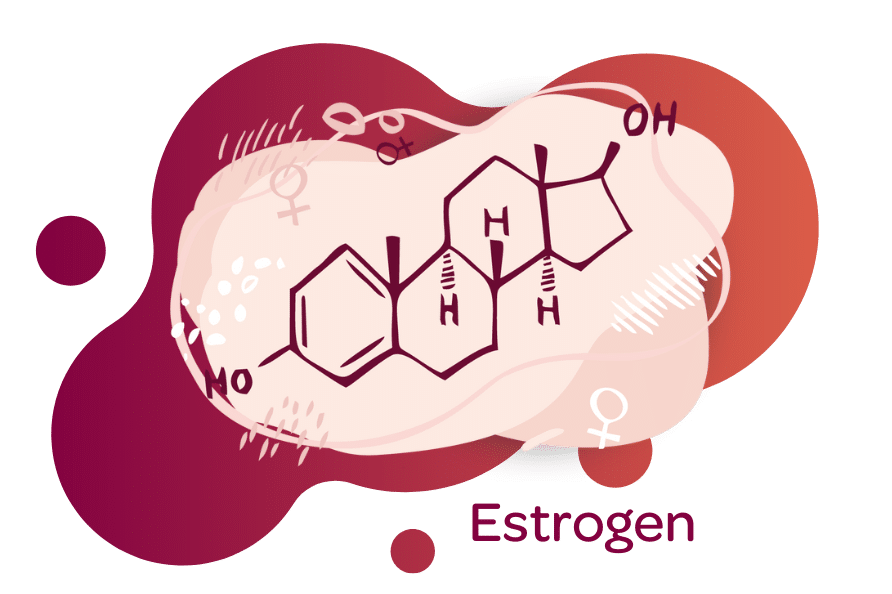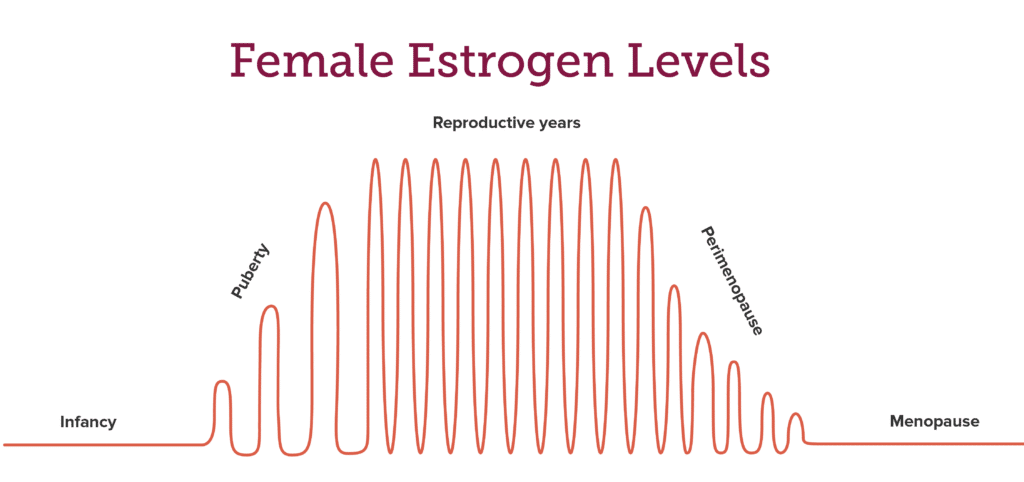
Estrogen is a powerhouse hormone in a woman’s body. It plays an essential role in sexual development, the reproductive system, the immune system, and overall health. While there are medically normal ranges of estrogen levels in women, based on where you may be in life and/or your menstrual cycle, there is no reliable way to know if your estrogen levels are “normal” for you.
In this blog, we’ll touch on what is considered medically normal estrogen levels, how those levels fluctuate, and why the one-size-fits-all approach doesn’t apply.
Medically Normal Estrogen Levels
Estrogen levels are often assessed within established medical ranges, which vary based on factors such as age, menstrual cycle phase, and life stage. Here’s an overview of what is considered medically normal.
- Reproductive Years: Levels fluctuate during the menstrual cycle (from about 20 to 400 pg/mL)
- Pregnancy: Levels rise to support fetal growth (depending on trimester, roughly 200 to 10,000 pg/mL)
- Menopause: Levels significantly decrease (falling to approximately 20 pg/mL or less)
*Levels are measured in picograms per milliliter (pg/mL) from a person’s blood.
While these ranges serve as guidelines, they fail to encompass the unique “normal” for each individual.
Your Estrogen Levels Change Daily, Monthly, and Throughout Your Life
Estrogen levels vary during your life and even daily during your menstrual cycle until post-menopause. When your period begins, estrogen levels are relatively low, but there’s a prominent surge as ovulation approaches. These changes are closely linked to your menstrual cycle, guiding its pattern.

When you enter perimenopause, your estrogen declines and begins to fluctuate, becoming unpredictable. Your ovaries start producing less estrogen, leading to classic menopausal symptoms like hot flashes, night sweats, mood swings, and irregular periods as your body adjusts. Review the complete list of low-estrogen symptoms.
As you move into full menopause, a new phase begins. Estrogen levels drop significantly and stay low during this transition, leading to noticeable changes in your body and how you feel overall.
Why is it Difficult to Know if You Have Normal Estrogen Levels?
Your Body has Its Own “Normal.”
Because of the constant changes in estrogen levels, even over the course of a day, identifying an individual’s “normal” is almost impossible. To do so, you would need to either monitor estrogen levels daily for extended periods of time or compare the exact same moment in time, month to month.
Getting a measurement of “normal” is even more challenging in perimenopause because of estrogen fluctuations during this time. Your estrogen levels might be super low for a while but then rise back up. So, measuring your levels will not give you useful information to determine if you’re in perimenopause. Once you’re in official menopause, meaning you have not had a period for an entire year, your estrogen levels are easy to measure, as they have reached a low point where they will stay for the rest of your life.
In summary: while determining via a blood test if your estrogen levels fall into a normal medical range is easy, knowing if your estrogen levels are where your body is used to them being, isn’t. That’s why paying attention to how and what you feel and recording new symptoms is critical.
Your Body Needs Its Own Unique Plan
Personalizing your healthcare plan for your estrogen levels involves your medical history, tracking your symptoms, and a trusted healthcare provider.
The crux of an effective plan lies in understanding your body’s cues. Because our estrogen levels are not regularly tested throughout our lives, it’s important to rely on your own observations. If you’re experiencing symptoms that align with low estrogen levels, listen to your body, and take note, as it can provide you and your doctor with valuable information for your healthcare decisions surrounding estrogen.
One option for treating low estrogen symptoms during perimenopause and menopause is Hormone Replacement Therapy or HRT. While HRT has been widely misunderstood, leading institutions like the North American Menopause Society (NAMS) now emphasize HRT is a safe and effective treatment for most women. Additionally, for women with the KRAS-variant, HRT can even reduce their risk of breast cancer. If you are currently experiencing symptoms of low estrogen and you’re 35-55 years old, we recommend booking a consultation with a trusted doctor about your risks, potential benefits, and preferences surrounding HRT to make the right decision for you.
Remember, your health journey isn’t universal; it’s rooted in your individual experiences, needs, and medical history.
Take Care of You
To wrap it up: while there are medical ranges on what is considered normal, there’s no ubiquitous “normal” when it comes to estrogen for each individual. Your body operates on a distinct rhythm, so embrace the medical care customized to your needs.




Leave a Reply